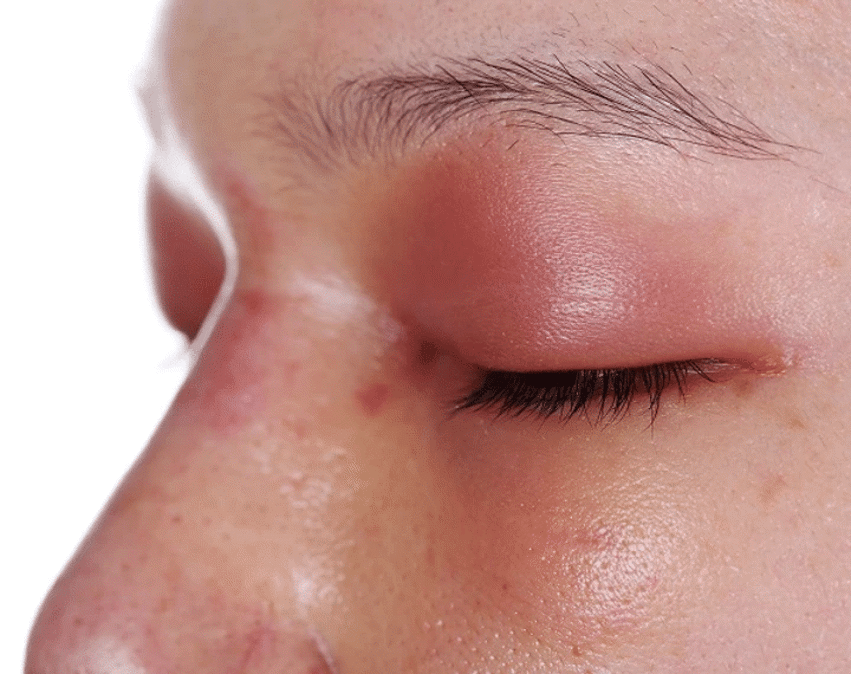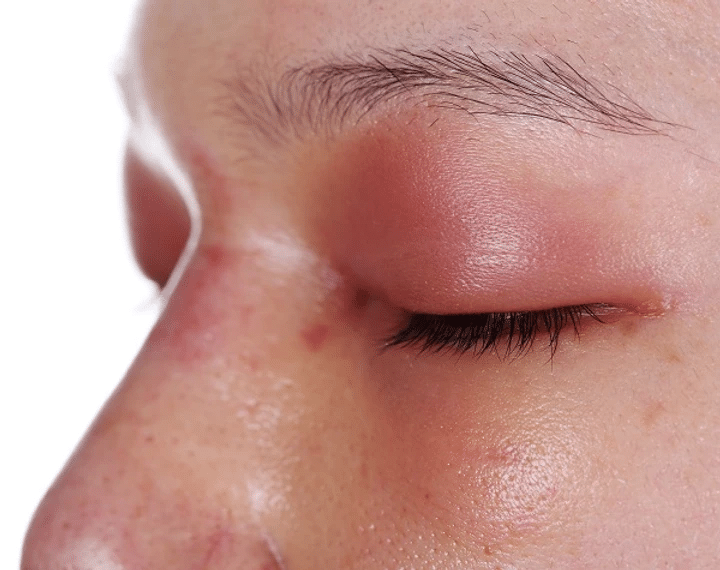A swollen eyelid typically occurs when there is excess fluid (known as edema) or inflammation of the connective tissues that surround the eye. A swollen eyelid can be both painless and painful and can affect both the upper and lower eyelids.
Swelling of the eyelid is typically a symptom of an underlying cause such as an infection or allergy and is often accompanied by one of these symptoms:
- Sensitivity to light
- Irritation to the eye
- Watering eyes
- Redness of the eyelid
- Obstruction of vision

If you’ve noticed you have a swollen eye, then let’s consider what it means.
Allergies
Eye allergies can occur when your immune system overreacts to a foreign substance. The most common eye allergens include dust, pollen, contact lens solutions, makeup and certain eye drops. These eye allergies develop when your eyes release chemical “mediators” in a bid to protect your eyes from the culprit allergen. The most common is histamine, which then causes the blood vessels within the eye to swell and dilate which causes your eye to become watery and itchy.
Conjunctivitis
Also known as pink eye, conjunctivitis occurs when the clear lining of the surface of the eye becomes inflamed. Bacterial, allergic, and viral varieties of pink eye can all result in itchy, watery eyes, in addition to the swollen eyelids.
Styes
They typically appear as a swollen, red bump on the edge of an eyelid. A stye can cause the whole eyelid to swell, and it’s typically painful to touch.
Eye injury
Any trauma caused to the eye area, including black eyes and trauma caused by cosmetic surgeries, such as eyelid surgery or blepharoplasty, can trigger swollen eyelids and inflammation. This typically begins to reduce as your eye recovers.
Chalazion
This can often be confused with a stye, but then transforms into a hard cyst. It’s caused by a blocked meibomian gland. Whilst a stye typically occurs on the edge of your eyelid, a chalazion tends to develop away from the eyelid edge. A chalazion can also cause your eyelids to swell and results in tenderness around the eye.
When to see a doctor
Swelling of the eyelids could be a sign of a more serious condition which could lead to a potentially threatening health problem to your eyesight, such as Graves’ disease, orbital cellulitis, and ocular herpes. If your symptoms worsen, persist or change, it’s important that you make an appointment with an eye doctor for proper diagnosis and treatment





